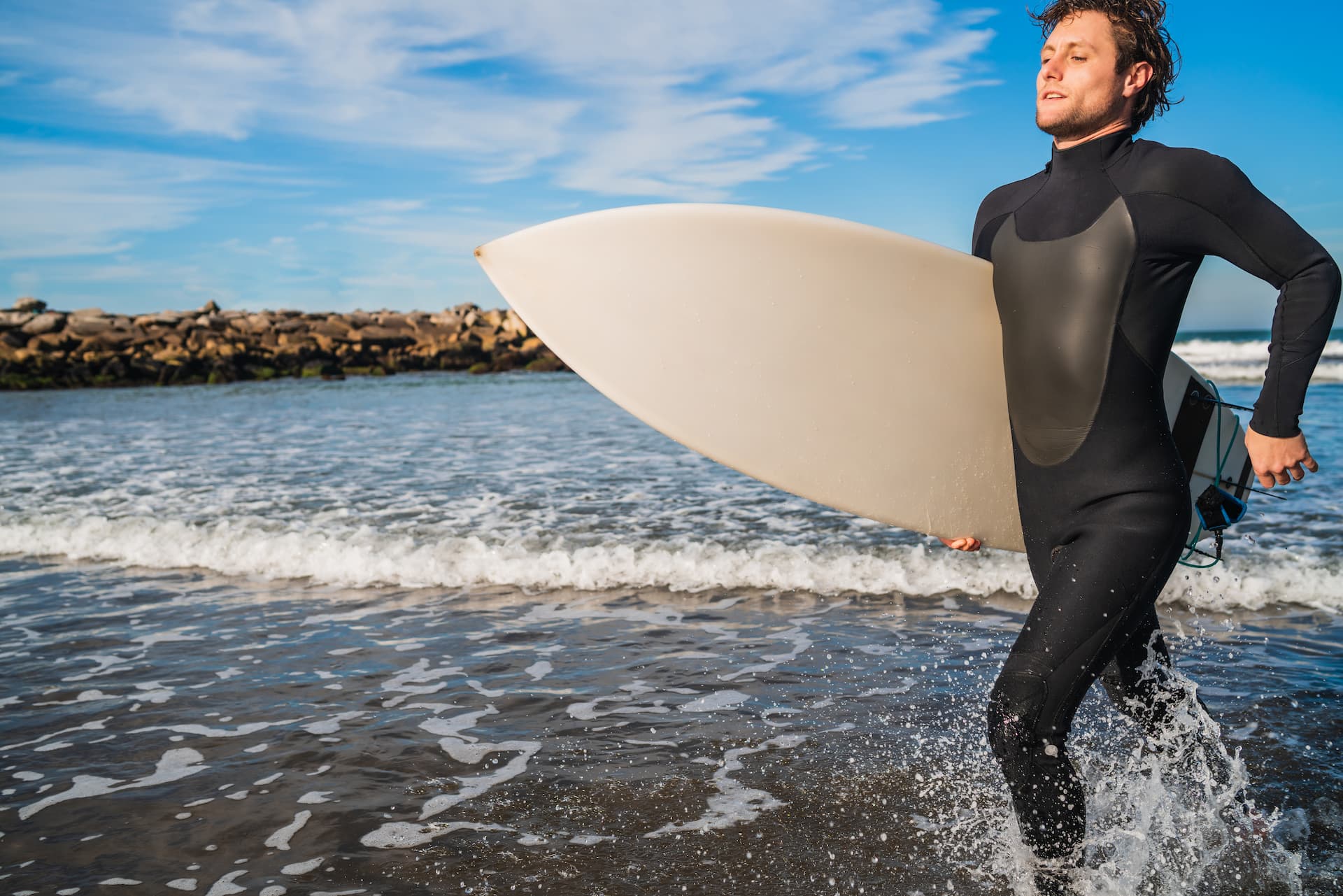When it comes to triathlons, it’s essential to be well equipped to optimise your performance. The triathlon suit plays a crucial role in all three disciplines: swimming, cycling and running. So how do you choose the ideal combination for you?
Types of triathlon wetsuits
There are two main types of triathlon wetsuits:
- Full-body suits: cover the whole body, from the ankles to the wrists. They are recommended for cold waters and offer excellent buoyancy.
- Sleeveless or “shorty” suits: these only cover the torso and thighs. They are better suited to warmer waters and allow greater freedom of movement in the arms.
Integral combinations: advantages and disadvantages
Full-body suits offer optimum thermal protection, making them an ideal choice for cold waters. What’s more, they offer greater buoyancy thanks to their neoprene thickness, which can be beneficial for less experienced swimmers. However, they can be less comfortable and restrict freedom of movement in the arms.
Sleeveless overalls: advantages and disadvantages
Sleeveless suits allow greater freedom of movement, particularly for the arms. They are also often less expensive than full-body suits. However, they offer less thermal protection and reduced buoyancy, which can be a problem for less experienced swimmers or in very cold waters.
Criteria to consider when choosing your combination
Neoprene thickness
The thickness of the neoprene plays an essential role in the suit’s thermal protection and buoyancy. We have an article dedicated to the choice of the thickness of its combination. Triathlon suits are generally available in different thicknesses:
- 1.5 mm to 2 mm: ideal for warm water (above 22°C)
- 3 mm to 4 mm: suitable for temperate water (between 15°C and 21°C)
- 5 mm to 6 mm: recommended for cold water (below 15°C)
The greater the thickness, the better the thermal protection, but the buoyancy and flexibility of the suit can be affected.
The size and the fit
Choosing the right size combination is crucial for comfort, mobility and efficiency. A combination that is too large can cause friction and water accumulation between your body and the suit, while a combination that is too small can limit your freedom of movement and cause discomfort.
To find the ideal size, it is recommended to try several combinations and follow the manufacturer’s advice. Feel free to move, swim and run with the wetsuit to test its comfort and functionality.
the type of closure
Triathlon suits are available with different types of closures:
- Back zipper: easier to put on and take off, but may be less comfortable when cycling and running.
- Front zipper: offers better comfort and quick donning, but may be less waterproof.
- Reverse zipper: allows quick opening and avoids friction, but can be difficult to use without the help of a partner.
Choose the type of closure that fits your needs, keeping in mind that some models may require the help of others for donning and removal.
Compare the brands and prices
The triathlon wetsuit market offers a wide variety of brands, models and prices. It is important to compare the different options to find the combination that fits your needs and budget.
Do not hesitate to consult the opinions of other athletes or seek advice from triathlon professionals. Keep in mind that the most expensive combinations are not necessarily the best, and that it is sometimes possible to find excellent combinations at affordable prices.
Repair your triathlon suit
It is important to have a long-term vision with your triathlon suit. A suit can last about ten years. The idea is to take a model of good quality, which will certainly be a little more expensive than from the entry-level to the purchase, but which will bring you a comfort and a much better resistance in time. That said, if after a while it gets damaged, know that it is possible to repair your triathlon suit. it’s our job!
in short
To choose the ideal triathlon wetsuit, take into account the type of wetsuit (full or sleeveless), the thickness of the neoprene, the size and fit, the type of closure, as well as the brands and prices available on the market. Remember to test different combinations to find the one that suits you best and be sure to follow the care tips to extend the life of your combination. And leave with the idea that it is better to invest in quality for an increased lifespan 😊




